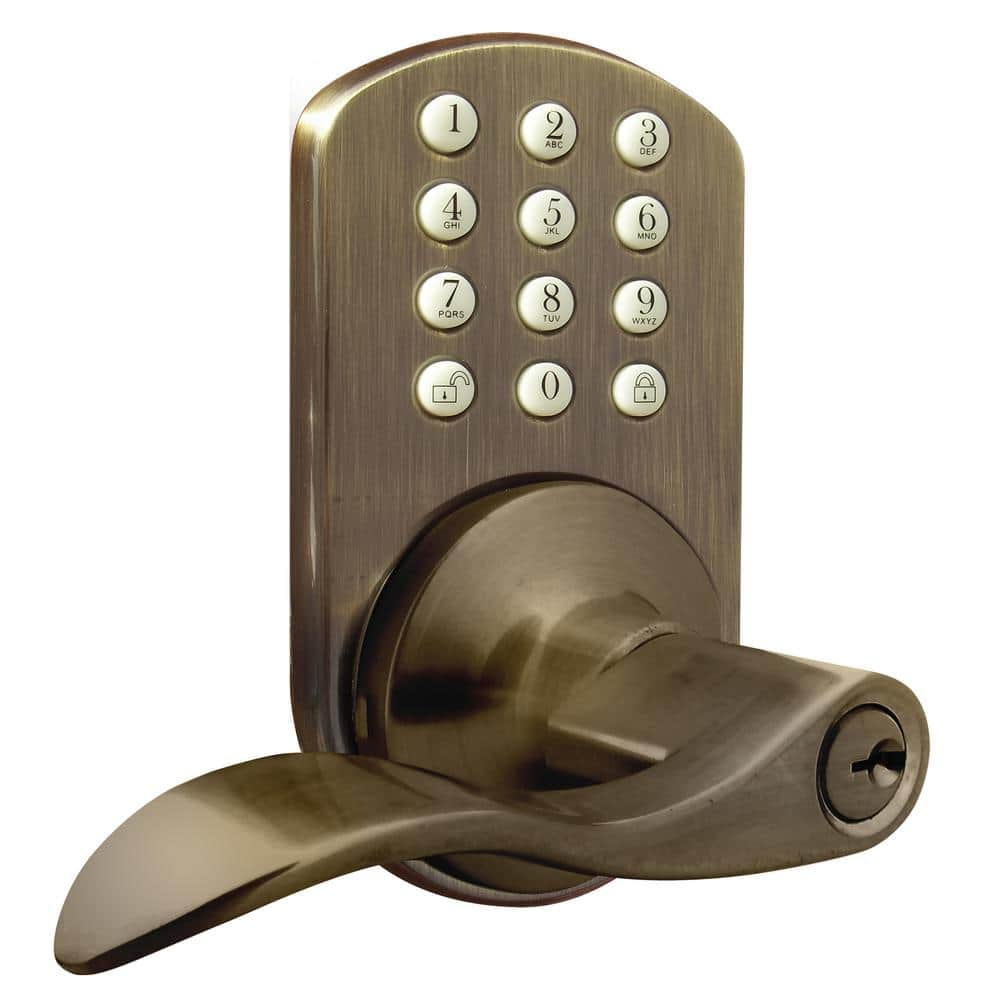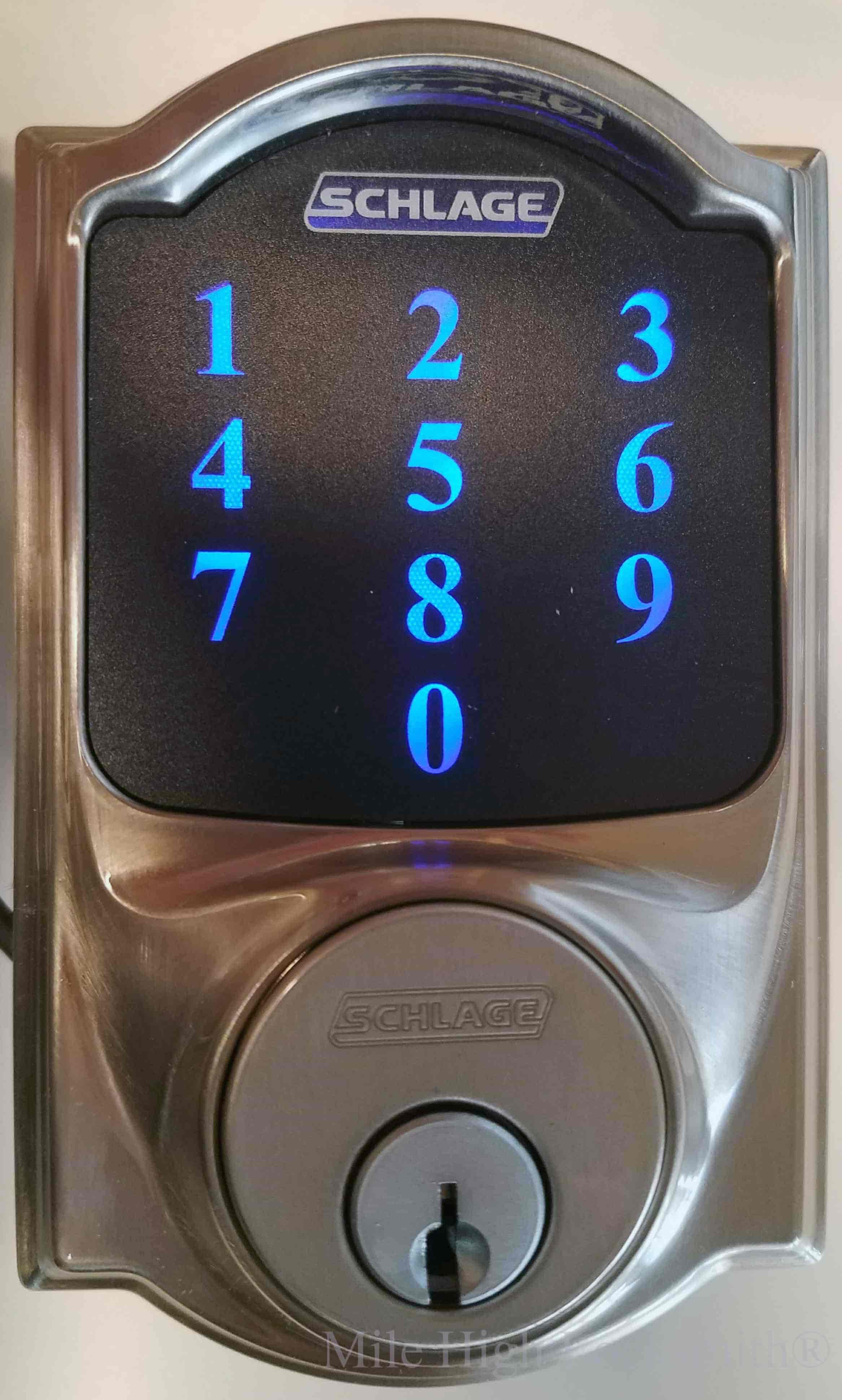

The pin should be able to be pushed into the channel of the sprocket when pressure is put on the curved, plastic actuator hook. If this is the case, there is a quick DIY fix. The most common problem is when the spring-loaded pin, in the moving part of the latch mechanism, falls out.When this is open, you should be able to identify the problem and understand if it’s something that you are able to fix yourself.Then, remove the cover that they were holding in place. Inside, you will find two more bolts holding the interior of the lock body together.At this point, you should be able to remove the face of the lock and the latch. Open the lock body by unscrewing the bolts holding together the exterior section of the electronic lock.Then, take both sections of the lock off the door. Then, open the door and support the front half of the lock body on the exterior of the door, the part with the keypad, as you unscrew and disconnect the two parts.Once this section of the lock can be detached from the door, unplug the wires connecting it to the rest of the lock mechanism.Do this by unscrewing the cover of the lock and removing it. Start by removing the cover of the electronic lock body on the interior side of the door.Here are the steps to find and repair the component which is causing it to malfunction.
#KEYPAD LOCK FOR DOOR CODE#
If the deadbolt does not disengage when the correct security code is keyed, this may be the problem you are facing. With keypad-controlled door locks, some homeowners find that after some time the lock stops working. Fix Electronic Lock with Faulty Deadbolt Operation Watch this video made by a DIYer while testing an August smart lock to diagnose a jam. Then, reassemble the rest of the smart lock and reinstall it on the door.Reset the gears and test the lock to see if the parts are able to move more smoothly.Then, use compressed air to gently clean the lock body and remove any dust or buildup which may be blocking normal function.It may be helpful to take a picture, at this point, of the internal gears in case you need guidance putting them back together. Once the backplate is unscrewed, be careful not to disconnect the wiring inside.If you’re handy, you may be able to resolve the problem by taking off the backplate of the lock and resetting the gears.Then, try to apply light pressure to overcome any motor friction and help it move the deadbolt into the locked or unlocked position.Can it lock, but not unlock? Can it disengage the deadbolt, but makes a noise when trying to reengage it? Before disassembling anything, test the lock a few times to understand which direction the smart lock is struggling with.Here are the steps to identify the problem. You may notice a clicking or grinding noise coming from the lock body when it tries to move the deadbolt.

But it will be unable to move the deadbolt in the opposite direction. When this happens, it will often be able to engage the deadbolt in only one direction – either locking or unlocking the door. If your electronic smart lock isn’t working, it might be jammed. If battery-powered locks are running low, replacing the batteries can be an easy quick fix.

Read below if you suspect that your electronic lock is jammed or has a faulty deadbolt function.īefore moving forward with the diagnostic and repair process, make sure that your lock has fresh batteries. We have provided step-by-step instructions for two common problems that average homeowners may be able to fix without calling a locksmith. Troubleshooting Common Smart Lock Problemsįirst, you have to identify the issue. How often should I change the lock code?.How often should I change the lock batteries?.Fix Electronic Lock Affected by Cold Weather.Fix Electronic Lock with Faulty Deadbolt Operation.Troubleshooting Common Smart Lock Problems.


 0 kommentar(er)
0 kommentar(er)
